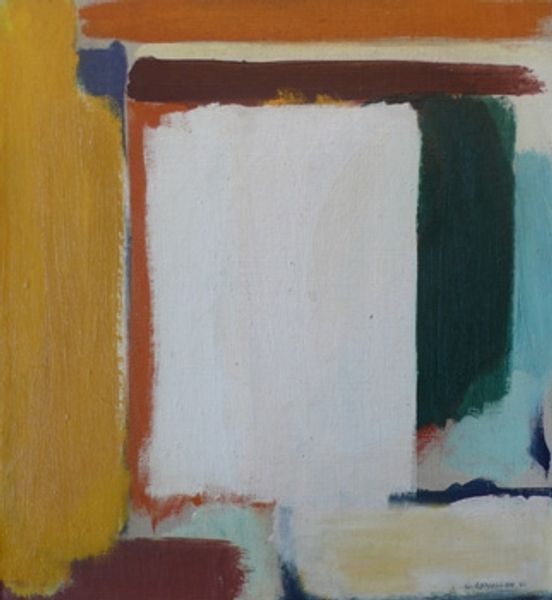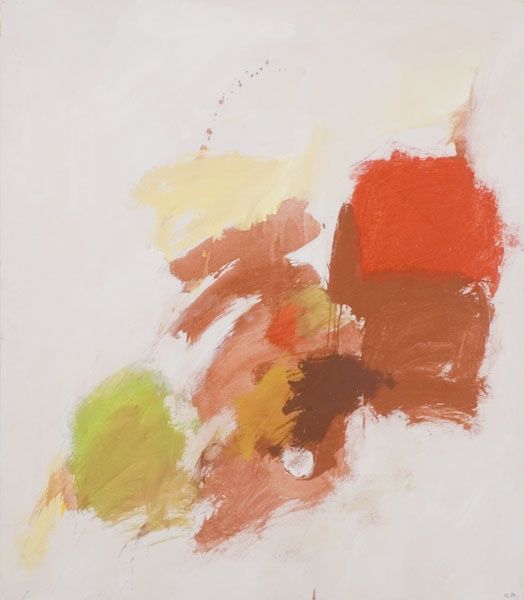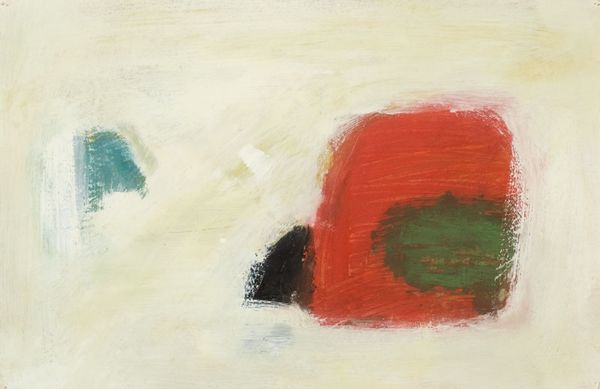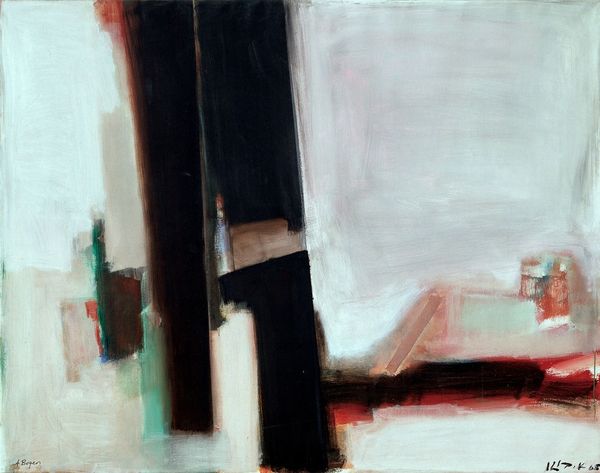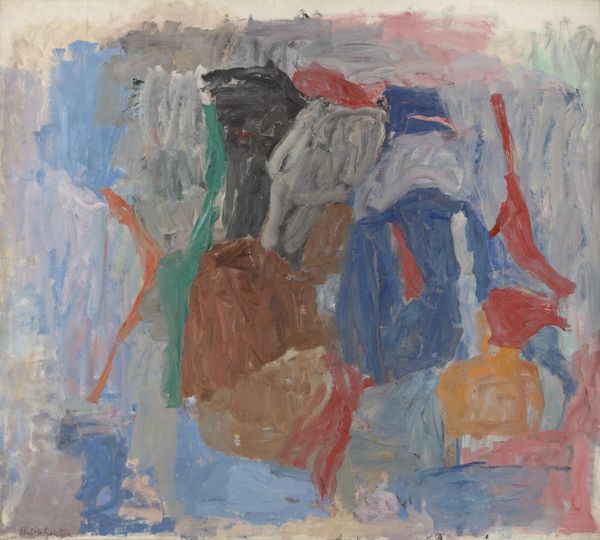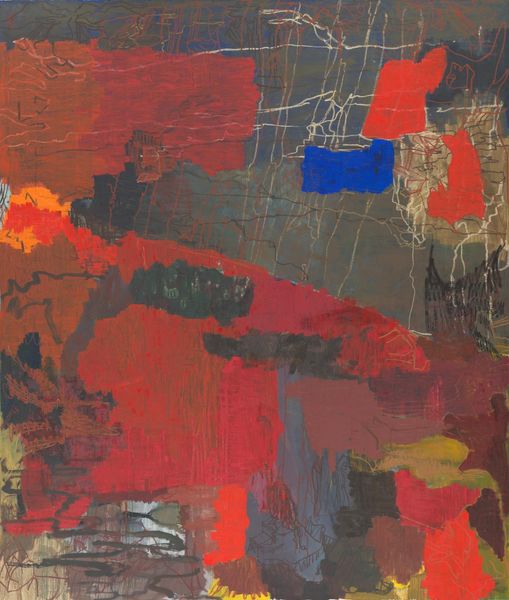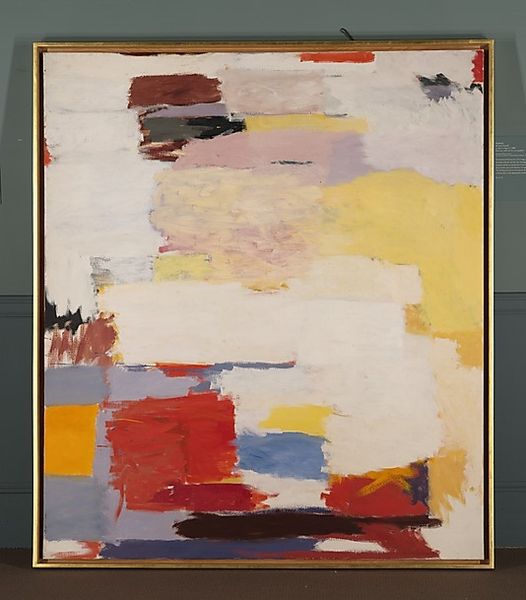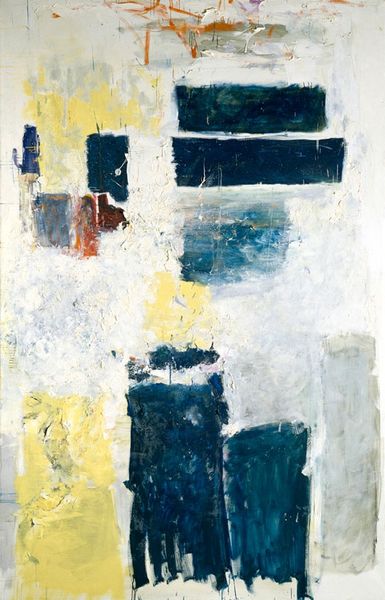
Copyright: Tove Jansson,Fair Use
Curator: My first impression is… stormy. Visually stormy. Editor: Good start. We are looking at Tove Jansson’s "Sommitelma," painted in 1967. Jansson, of course, is far more widely known for creating the Moomins. What do you think the presence of the Moomins means for understanding the critical reception of her abstract art? Curator: Well, on its surface, "Sommitelma" is comprised of broad swathes of oil paint – blues, greens, reds, browns, all vying for space on the canvas. To consider the tools and material circumstances in this creation, I imagine a rather robust brushwork. Considering Jansson’s fame stemming from commercial work, does the commodification of the Moomins overshadow her attempts at abstract expressionism? Was she taken seriously? Editor: The question of serious consideration is important here. Post-war artistic landscapes were shifting dramatically. This piece definitely shows the influence of abstract expressionism which was dominating at the time, particularly through the cultural institutions like museums and galleries, pushing certain styles while overshadowing others. Is there room in art history for artist to shift so dramatically? Curator: I can’t help but see the legacy of craft in this work too. The layering and blending of colors speak to an understanding of the materiality of paint itself. It's the texture that strikes me. Is this a negotiation of high and low? Editor: Certainly the institutional forces might try to suggest the artist should either do "high art" or "commercial art", however Jansson existed in the culture that encompassed so much more, her career allowed her more exposure. What about the social role that Moomins have in Finnish culture? Were those childhood stories considered as the product of 'low art', or have they actually influenced and facilitated the development of something considered 'high art?' Curator: Fascinating point. And perhaps this abstract expressionist painting is trying to engage the same playful yet profound sensibilities that the Moomins embody. Editor: Ultimately, understanding how Jansson moved within different socio-political landscapes allows us a deeper comprehension of what constitutes “art” and the shifting grounds upon which those definitions stand. Thanks for illuminating this unique space within Jansson’s diverse practice! Curator: Thank you, I find myself seeing the art-historical currents differently after focusing on her means and the materials at hand.
Comments
No comments
Be the first to comment and join the conversation on the ultimate creative platform.
